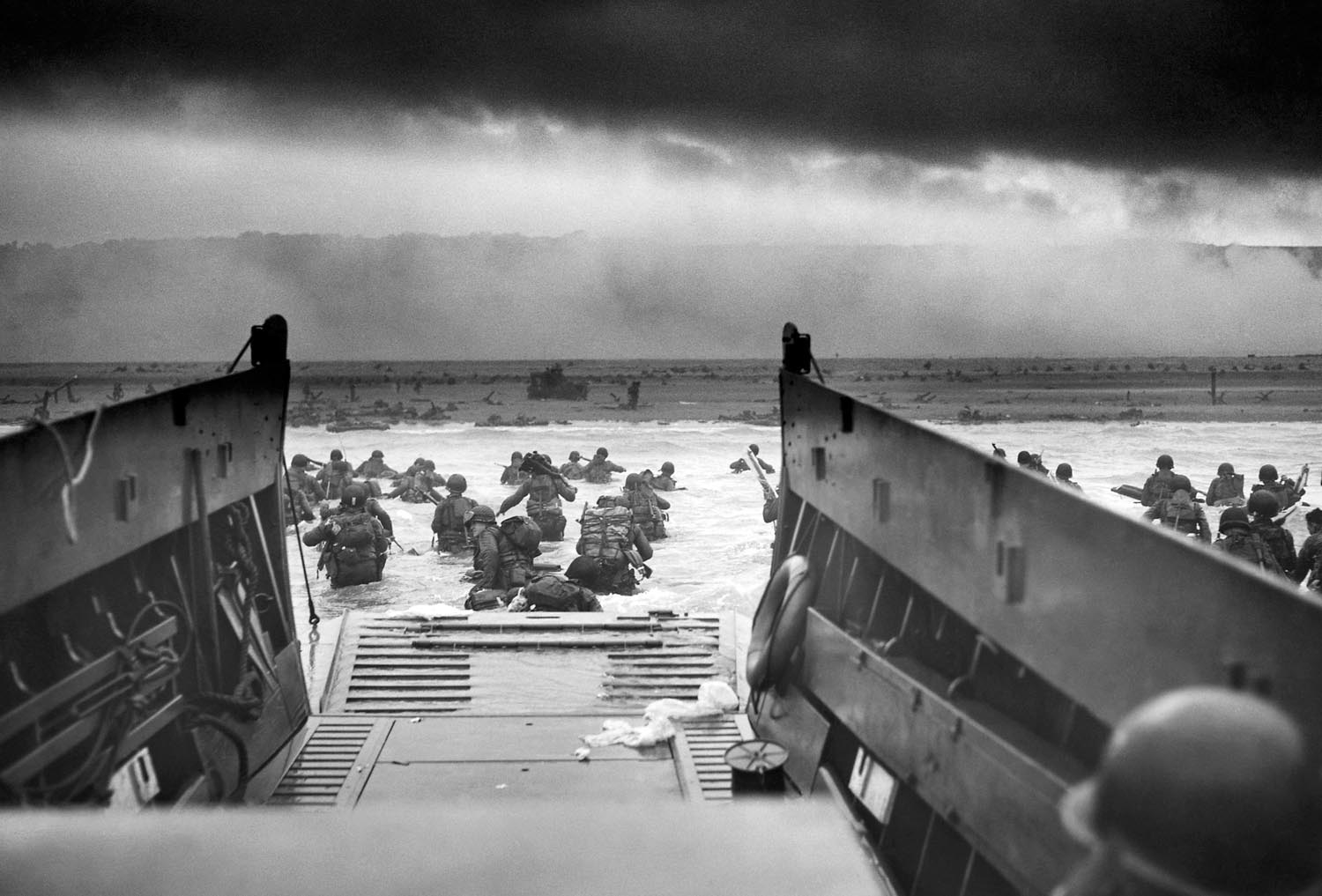
LCVP No 22 from USS Dickman (APA-13) at Normandy. Note the safety lines hanging from the side in case someone falls overboard.
During the Second World War the LCVP was used in almost all theatres, including North Africa, Sicily, mainland Europe, the Pacific and the Far East. As a result, there are many veterans’ accounts of their experience of landing from an LCVP. Seasickness was rampant and oftentimes troops stepped off the ramp in deep water ‑ sometimes over their heads ‑ because obstructions and other debris prevented the LCVP from reaching the beach itself. Boarding an LCVP was difficult in heavy seas using the scrambling nets as ladders. One had to judge when to let go and jump into the boat at the highest point in the wave. The side armour was limited in extent so when during an opposed landing, troops had to hunker down to benefit from the armour protection. But once beached, the LCVP could be quickly unloaded, much faster than many of its competitors. When leaving the craft, troops in columns were told to jump out to one side or the other of the ramp since there was a possibility that the boat would move forward as it became lighter and the wave action pushed it in further, risking injury to any soldier directly in front of the ramp.
In preparation for an assault landing on a beachhead, a complete checkout of the boat, including installing drain plugs, was carried out, just before the LCVPs were off-loaded from the parent attack transport (APA; the largest of these carried over twenty LCVPs). Just before the LCVP was lowered into the sea, the engine was started to make sure it was running properly. Once on the water, the forward and aft falls (block and tackle) were released, and the LCVP then moved out to a holding pattern circle as shown below. The holding pattern to starboard circled clockwise; that to port, counter clockwise. Spacing between boats in a holding circle was approximately one and one half boat lengths, with speed kept to the minimum that allowed steerageway, which might vary depending on wind and sea conditions. As space became available alongside the APA, an LCVP was called in to load troops. The loading stations alongside the APA were marked with a colour code and number and had a net in position for the troops to use when climbing down into the boat. After loading, the LCVP then went back to the holding circle at the assembly area.
Assembly formation of LCVPs.
After all boats in the assembly area were loaded, the command was then given to move to the rendezvous area. The LCVPs peeled off, being led by a control boat that guided the flotilla to the rendezvous. The control boat was typically a Eureka boat modified with a cabin, communication and radar equipment. The single line ahead formation makes it easy to direct the LCVPs to the rendezvous area. However, if there were a threat of air attack, the LCVPs would scatter and follow in the general direction of the control boat. The flotilla was flanked by support boats, which might carry rockets for the assault, smoke screen equipment or heavy weapons to back-up the flotilla. The support craft might be modified Eureka boats or Patrol Torpedo (PT) boats. The two control boats that define the rendezvous area are shown at the top of the figure. The LCVPs line up in a flank or wave formation when reaching the rendezvous.
Plan of formation for moving to the rendezvous area.
Shown above is the assault wave at the line of departure, ready to hit the beach. The boats are sitting at idle and will proceed at the signal to attack. When the signal is given, the wave starts toward the beach at about 3/4 power keeping the wave lined up. After the support boats have delivered their ordinance, the command is given for full throttle and the LCVPs proceed to the beach at maximum speed.